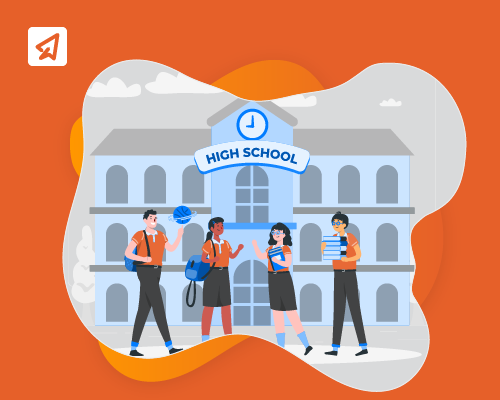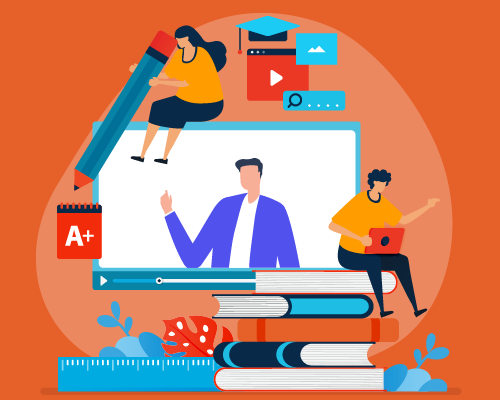What is Universal Design for Learning (UDL)?

What is Universal Design for Learning?
It is a commonly known anecdote that you cannot teach and test all animals in the jungle with the same skill. While a bird can fly to the tree top, a snake slithers to the top, an elephant taps it with its trunk and a fish cannot get to it at all. Students are much the same and come with their own strengths and needs.
Universal Design for Learning (UDL) stands for universally accessible design that facilitates accessibility of learning to students of all abilities and preferences. It is a teaching approach that provides personalised learning experiences that cater to students of all learning styles, thus enabling universal access to education.
Enabling equal learning opportunities for all students, UDL is rooted in the success of every pupil by individualising their learning and assessment mechanisms, allowing flexibility in lesson design and adjustment of the teaching-learning experience that supports every student’s strengths and needs.
What Are the 3 Principles of Universal Design for Learning?
Universal Design for Learning works on the principle that learning challenges can be handled by designing effective learning environments and stimuli. It leverages evidence-based learning strategies and digital tools to support students in their learning journeys.
The 3 principles of Universal Design for Learning concern themselves with how students consume and receive information. It begins by asking the educators to deeply understand their classroom dynamics and students’ needs followed by assessing if those learning needs are being met.

1. Engagement
This first principle is about creating an engaging environment for student learning. Different students engage with information differently. Some internalise and process information better via visual and auditory cues, others by tactical experience. The principle of engagement ensures that lesson design and learning resources shared in the classroom deliver engagement for all learning styles.
2. Representation
This principle refers to accommodating assistive options that help represent information shared in various formats. Students with visual challenges could benefit from larger font sizes while students with different native languages would grasp the information better with translation. Assistive technology is a great tool to enable individualised representation in the classrooms.
3. Action and Expression
The third principle focuses on how students share their learnings. Some students might be good at putting their knowledge down on paper, others might prefer to create a model or a presentation. With highly individualised learning styles, students also need flexibility in demonstrating their learning (current and acquired through the lesson). This highlights the need for utilising a mix of different assessment methods to gauge learning outcomes.
Introducing Universal Design in the Classroom
Universal Design for Learning is a customised approach and can look very different in each classroom however, it remained focused on delivering a targeted learning approach for each learning style. The students are made aware of the learning objectives, and resources available while being given the freedom to choose their preferred learning modality.
Being entirely student-centric this approach can sometimes seem daunting for educators. The solution though lies in taking time to understand the students in each classroom. Once the educator has a grasp of this variable at the beginning of the curriculum, it becomes much easier to plan lessons based on the developmental needs and learning preferences of the students.
Common Examples of Executing UDL in the Classroom
- Shared Lesson Goals – When students understand the desired outcome of a learning experience it helps them know what they are working towards and how they will be assessed. Posting lesson goals on the class noticeboard, or having students take them down while the educators reiterate them through the lesson are easy ways of keeping everyone aligned.
- Assignment Options – Giving students the flexibility to demonstrate their knowledge through different assignments as opposed to a standard one-size-fits-all assessment, helps students play to their strengths. With predefined lesson goals and assessment criteria, students have the chance to meet the learning requirements and produce work that engages them.
- Flexible Workspaces – Some students learn best when they can actively interact with the material and others when they thoughtfully peruse and analyse it. Flexible workspaces allow students to work individually or in groups encouraging personalised learning experiences.
- Regular Feedback – An educator plays multiple roles while teaching a class using the UDL approach. For some students, they become mentors and guides facilitating their learning through discovery, while for others they require a more one-to-one direct teaching approach. Either way, an educator is always accessible to guide, assist or address students’ learning process with prompt inputs and regular feedback.
- Learning Materials – Ensuring multiple touch points and information access, digital learning tools, audiobooks, printed material, workbooks, multimedia learning videos experimentation stations, etc. can offer learning opportunities to students of all learning styles. The use of assistive technology is beneficial for students of all abilities.
What Are the Benefits of Universal Design for Learning?
The foremost goal of any learning activity is to deliver a targeted learning outcome. UDL assists educators and students in leveraging personalised learning to meet this objective. It improves student engagement, enabling better understanding and retention of desired learning. Some of the key benefits of UDL are:
- Accessibility: UDL makes learning accessible to students of all learning styles. By ensuring better accessibility, it improves the efficacy of the teaching-learning activity.
- Student-Centric: By removing environmental barriers and offering information in ways that adapt to the students, UDL focuses on making education student-centric, giving students higher control over how they learn. This helps students become more involved in the lesson, facilitating in-depth learning experiences.
- Flexibility: UDL accommodates individualised learning, letting students move at their own pace. It further helps them leverage their strengths to learn and work towards improving their weak areas.
- Inclusivity: UDL promotes an inclusive classroom environment normalising the ability of students to learn differently. It nurtures the spirit of acceptance and accommodation for students of all abilities.
- Engagement: When students are not restricted by strict classroom norms and are allowed free expression in open learning environments, they are more engaged in their learning process, leading to better learning outcomes.
How Can Extramarks Help You in Your Universal Design for Learning Journey?
- Customised Content: Extramarks offers personalised learning resources that can be tailored and adapted to individual learning needs assisting educators in creating a UDL-conducive environment with ease. Its progress-tracking feature helps teachers monitor individual student progress while identifying areas that need additional support.
- Variety of Resources: Offering diverse formats with accessibility features, Extramarks helps educators deliver engaging and accessible content with interactive tools, multimedia learning capsules, subtitles, text-to-speech features, adjustable fonts, etc.
- Engagement Tools: In addition to interactive tools, Extramarks offers other unconventional teaching resources such as games, activities, and quizzes that help drive student engagement and easy learning.
UDL is an empowering strategy for both teachers and students. With the right preparation, Universal Design for Learning can enable a joyous learning experience for students while helping educators deliver improved learning outcomes with ease. It lays the foundation for an inclusive, connected, and motivated classroom environment, facilitating better learning responsiveness amongst students and nurturing strong teacher-student relationships.
By choosing Extramarks, you ensure that your educational journey is supported by cutting-edge tools and resources, making the implementation of UDL not only possible but highly effective. Transform your teaching experience and elevate student success with Extramarks today!
Last Updated on August 5, 2024









